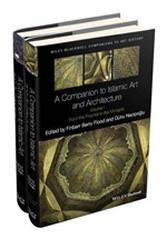The two-volume Companion to Islamic Art and Architecture surveys the field in all its grandeur, whilst encouraging original approaches to canonical subjects and offering new scholarship on previously neglected topics. The combined volumes showcase more than 50 newly commissioned essays that bridge the gap between the summary treatment of the traditional survey and the specialized monograph. These essays are organized according to a new chronological-geographical paradigm that remaps the unprecedented expansion of the field in recent years and reflects the nuances of major artistic and political developments during a 1400-year span. Each volume is organized under a broad chronological rubric: Islamic art before and after the Mongol sack of Baghdad in 1258, an event widely accepted as a watershed, with thematic essays grouped under further chronological subdivisions. The first volume begins with a general introduction co-authored by the editors, which outlines relevant concepts, approaches, and historiographies, providing a framework within which to understand the structure and contents of both volumes. In addition to a map of major sites included in volume one, each of the subsections is accompanied by a brief outline of the main cultural and historical developments during the period in question

(0 Comentarios)